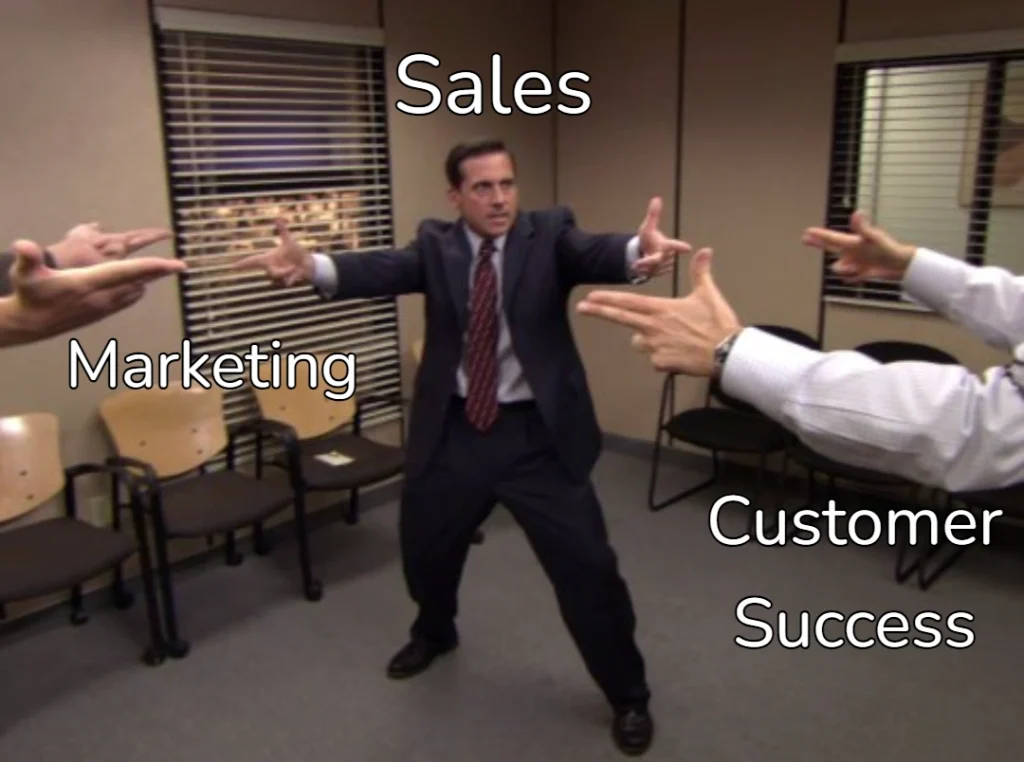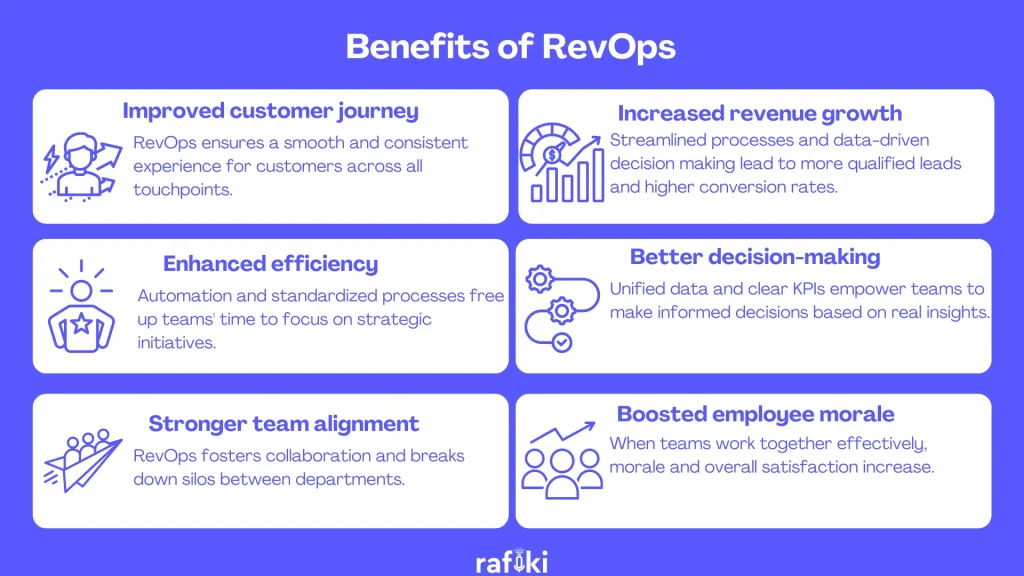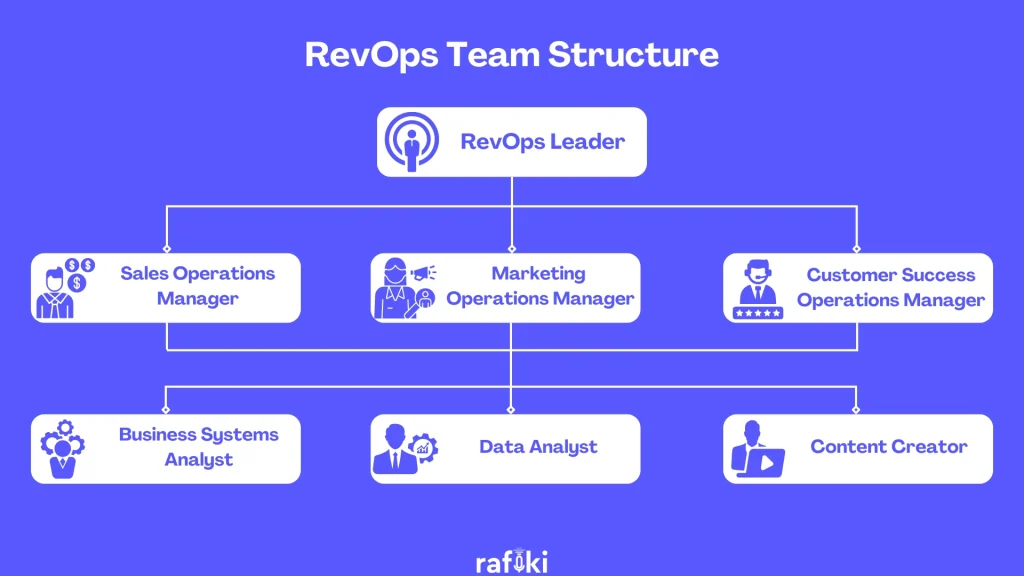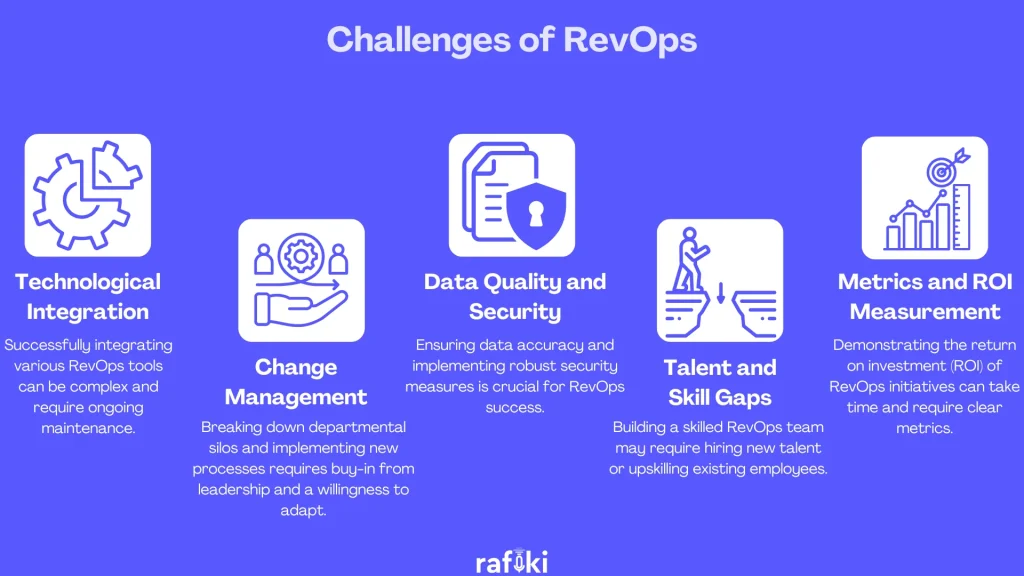Why Rafiki
Pricing


Pricing
Solutions

RevOps Leaders
Synchronize revenue generating functions

SDR Leaders
Get your team aligned and Coach your Reps 3x faster at scale

Sales Leaders
Unlock pipeline truth, drive confident forecasts


Ever feel like your sales, marketing, and customer success teams are operating in silos, or worse, at each other’s throats in meetings? This disconnect can lead to missed opportunities, frustrated customers, and ultimately, stunted revenue growth. RevOps (revenue operations) tackles this head-on by aligning these critical functions.
It fosters collaboration, streamlines processes, and equips teams with the data and insights they need to win. In short, RevOps is the glue that holds your revenue engine together.
Let's dive in~
RevOps isn't just about bringing teams together for a pizza party (although those can't hurt!). It's about creating a strategic framework that breaks down departmental barriers and ensures everyone is working towards the same goal: driving revenue growth.
It focuses on several key areas:

While RevOps offers significant benefits, it's not a one-size-fits-all solution. Here are some signs that your business might be ready to invest in a dedicated team:
Imagine your sales and marketing teams working in perfect harmony, armed with real-time customer insights. Imagine your customer success team proactively identifying and addressing churn risks (which you can do with Rafiki by the way!). This is the power of RevOps in action.
The ideal structure of a RevOps team will vary depending on the size and complexity of your organization. However, some common roles include:

Keep in mind, the above illustration is an example. Depending on the business context, the structure you require can be different. Also starting out, your business would not need all these positions filled. But it provides a good overview of the direction in which your RevOps team can grow as they deliver more and more value.
Building a high-performing RevOps team requires active support from revenue leaders. This isn't just about budgetary approval; it's about creating an environment where RevOps can flourish. First and foremost, revenue leaders need to clearly communicate the goals and objectives of RevOps. This vision should be well-defined and demonstrably linked to overall revenue growth. Furthermore, a long-term commitment to RevOps is essential. Building a data-driven, well-oiled revenue machine takes time, and consistent leadership buy-in is crucial for securing resources and fostering departmental collaboration.
Revenue leaders also need to recognize the importance of technology enablement. The right RevOps tools can automate tasks, unify data from various sources, and generate actionable insights. Investing in these tools empowers the RevOps team to streamline processes, optimize workflows, and ultimately, deliver significant value.
Finally, empowerment is key. RevOps initiatives often involve breaking down departmental silos and implementing new processes. Revenue leaders need to empower the RevOps team to make these necessary changes and overcome any resistance they may encounter. This fosters a culture of ownership and accountability within the RevOps team, allowing them to take the reins and drive positive change across the organization.
Now that we’ve gone through what RevOps does and need, let’s finish setting the context by looking at the challenges they face in their roles everyday:

Just like how RevOps helps define OKRs & KPIs for other teams, they need their own clear objectives and a way to measure its success. Objectives and Key Results (OKRs) provide a goal-setting framework that aligns the RevOps team with broader company objectives. With the full context in mind, let’s look at some examples of OKRs for a RevOps team:
Key Performance Indicators (KPIs) provide specific metrics to track progress towards achieving these OKRs. Here are some examples of KPIs relevant to RevOps:
By setting clear OKRs and tracking relevant KPIs, RevOps teams can demonstrate their impact on the bottom line and ensure their efforts are aligned with overall company goals. For instance, utilizing a tool like Rafiki's Smart Call Scoring can help measure the effectiveness of sales calls, contributing directly to achieving sales funnel efficiency OKRs.
RevOps is a strategic approach to aligning your revenue machine. By breaking down silos, harnessing data, and optimizing processes, RevOps empowers your teams to deliver exceptional customer experiences and drive significant growth.
Ready to unlock the RevOps advantage for your business? Rafiki's features, like Smart Call Summary and Ask Rafiki Anything, can empower your RevOps team to streamline workflows and make data-driven decisions. Sign up for a free 14-day trial of Rafiki and discover how conversation intelligence can transform your revenue operations.
Unlock Revenue Growth